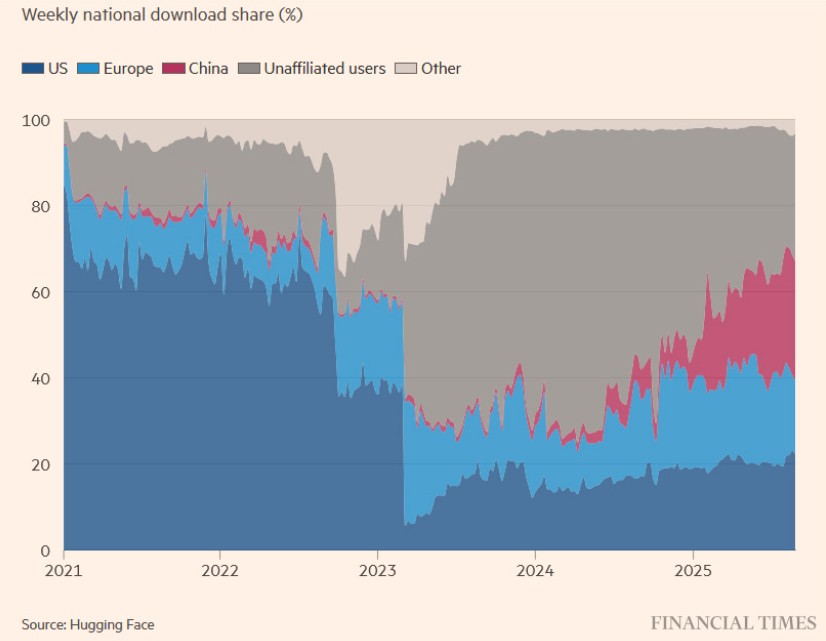
China surpasses the United States in the global market for open-source artificial intelligence (AI) models. According to a November 26 Financial Times report, a study by MIT and open-source AI startup Hugging Face found that the share of downloads of open-source AI models developed by Chinese teams rose to 17% over the past year, surpassing their American counterparts for the first time and gaining a key lead in the global application of AI technology.
Amid the AI boom sweeping the global tech industry, US tech giants such as OpenAI, Google, and Anthropic tend to adopt a ” closed ” strategy, maintaining complete control over advanced AI technologies and profiting from user subscriptions and corporate partnerships.
In contrast, Chinese tech companies favor a more open strategy , releasing a number of open-source models.

Open-source AI models refer to AI models whose code and architecture are publicly available, allowing any developer to download, use, modify, and distribute them. The widespread adoption of open-source models will have a significant impact on the future development of AI, facilitating startups’ product development and researchers’ improvement.
Thanks to the tireless efforts of Chinese researchers, Chinese open-source models have demonstrated strong competitiveness. Research by MIT and Hugging Face found that over the past year, the share of new open-source AI models in total open-source model downloads rose to 17%, surpassing the 15.8% share of development teams in the United States. This is the first time Chinese teams have surpassed their American counterparts in this metric.
Wendy Chang, a senior analyst at the Mercator Institute for China Studies, a German think tank, emphasizes: “Open source is a more widespread trend in China than in the United States. American companies are not willing to do it; they want to make money and don’t want to reveal their trade secrets.”
According to data from MIT and Hugging Face, DeepSeek and Alibaba Cloud’s Qwen are the most downloaded open-source models in China. The Financial Times reported that the DeepSeek-R1 model shocked Silicon Valley: it uses low costs and computing power, but its performance is comparable to the best US models, raising doubts about the ability of US AI labs to maintain their competitive edge.
Industry experts told the Financial Times that despite the series of measures taken by the United States to crack down on China, such as controls on chip exports, China has a large number of exceptional talents who have demonstrated great creativity in developing open-source models.
In an effort to win the so-called “AI race,” the Trump administration has been trying to persuade American companies to invest in open-source models that embody “American values.” However, the number of large, independent open-source development teams in the United States is much smaller than in China, and American tech giants like Meta are now choosing to increase their investments in closed-source models.
In August of this year, OpenAI released its first batch of “open weights” models. These models are free, but the information they provide is not as comprehensive as open-source models and does not include the code and training data needed to train a model from scratch.
Follow us on Google News to receive daily updates on cybersecurity. Contact us if you would like to report news, insights or content for publication.
